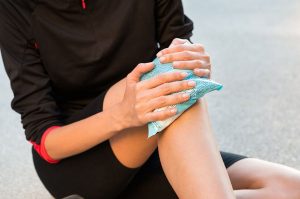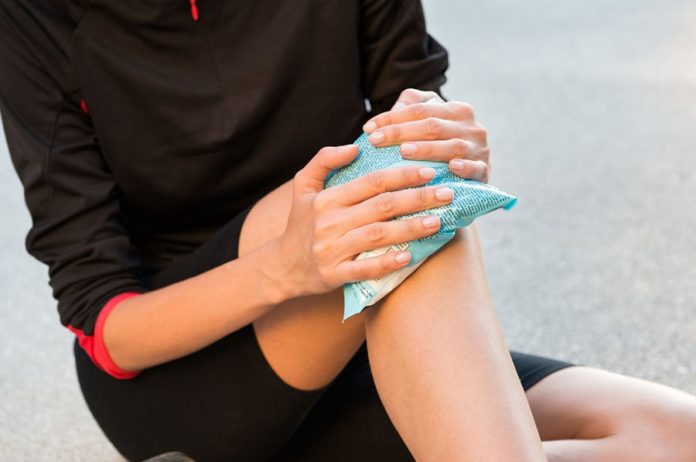 With the school season now underway, many children and teens are participating in a wide variety of organized sports.
With the school season now underway, many children and teens are participating in a wide variety of organized sports.
However, with this participation comes the potential for injury.
An estimated 30 million children and teens are involved in organized sports across the U.S. with an estimated 3.5 million sports-related injuries for children ages 14 and under occurring, according to statistics from the National SAFE KIDS Campaign and the American Academy of Pediatrics.
For high school athletes, an estimated 2 million injuries and 500,000 doctor visits are reported.
About 62 percent of sports-related injuries related to organized sports occur during practice. Injuries can occur with any activity – from football and basketball to soccer and ice hockey.
Sprains, strains and other soft-tissue injuries are the most common among the injuries with concussions, broken bones and fractures also reported.
Due to the significance of the issue, organizations such as STOP (Sports Trauma and Overuse Prevention) Sports Injuries offer tip sheets for parents and coaches to reduce the potential for injuries.
The website offers sport-specific tips as well as injury-specific resources to help avoid or identify potential injuries.
According to HealthyChildren.org, more than half of the injuries suffered by young athletes are caused by overuse. Children are more susceptible to these types of injuries because their growing bones are not as resilient to stress.
Preventing overuse
One of the key factors in preventing an overuse injury is to have a physical checkup before participation begins. Young athletes also should maintain good fitness levels during the off season and allow for gradual pre-season training. Other tips include:
- Avoid specializing in one sport before high school
- Take at least one day off per week from the sport
- Perform warm-ups to the sport in different ways such as swimming before a cross country run.
- Increase weekly training time by no more than 10 percent each week.
- Maintain proper hydration
- Avoid playing when tired or in pain
Another component is to ensure your child has the proper safety gear for adequate support in their sport, i.e. athlete shoes tailored for running. Check with your child’s coach or athletic trainer for specifics. Another possible source is kidshealth.org.
Common sports-related injuries
Among the most common musculoskeletal sports injuries are sprains, strains and growth plate injuries. Muscle and tendon issues are common as are growth plate injuries. A growth plate is the development area at the end of long bones such as in hands, fingers, forearms, femurs in the upper leg and tibia or fibulas in the lower legs as well as metatarsals and phalanges in feet.
Stress fractures can also occur. These involve hairline fractures of a bone that has been subjected to repeated use over a period of time. Tendonitis from the overuse of muscles and tendons can cause pain and discomfort.
Remember RICE
If your young athlete has a sprain or other soft tissue injury, remember the RICE treatment. These steps can help reduce the impact of the injury as you prepare to take your child to a physician:
- Rest – stop using the injured area for at least 48 hours.\
- Ice – Place an ice pack on the injured area for 20 minutes about four to eight times a day.
- Compression – Check with your physician or a Rapid Med physician about using items that can support an injury and reduce swelling. These items might range from an elastic wrap to splints.
- Elevation – Keep the injured area above heart level to help reduce swelling.
Concussions
Concern about the impact of concussions has become a more common aspect of sports-related injuries. Symptoms of a brain-related injury can be hard to spot or can be delayed. Among the signs to watch for are:
- Balance problems
- Difficulty with concentrating
- Dizziness
- Drowsiness
- Fatigue
- Feeling emotional
- Feeling mentally foggy
- Headache
- Irritability
- Memory difficulties
- Nausea
- Nervousness
- Numbness or tingling
- Sadness
- Sensitivity to light or noise
- Sleeping more than usual or difficulty falling asleep
- Visual problems – blurry or double vision
- Vomiting
The first important step to take if your young athlete is experiencing any of these symptoms following a sports-related impact is to immediately take them to a medical professional for evaluation. A secondary concern is to ensure they have adequate time for recovery. School districts such as Lewisville ISD have taken steps to recognize symptoms as well as implement programs designed to assist athletes recovering from concussions while at school. The program – GetSchooledOnConcussions.com – was first introduced in a Lewisville ISD middle school, Clayton Downing Middle School in Flower Mound, last year.
Regan Rodgers was injured in September 2015 while playing ninth grade football. In 2016, his family, Dr. John Gomez with Rapid Med Urgent Care Center and renowned education expert Brenda Eagan Brown introduced the program to Lewisville ISD.
The program allows educators, parents and onsite medical staff to assess the student’s progress and make necessary adjustments to ensure proper recovery.
Learn more about Regan’s story here.









 GIF.gif)






